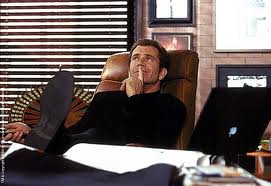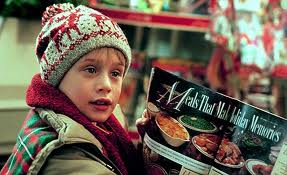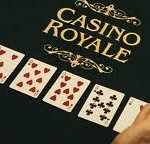Six things that need fixing is a screenwriting concept you’re already familiar with–even if you don’t know it by that name. Basically, in the first act of a movie, a few aspects of the hero’s life are not going so well. By the end of the third act, these things will have improved–thanks to the changes the hero undergoes during his Act Two journey.
Sound familiar, right?
In his screenwriting guide, Save the Cat, Blake Snyder named this common screenplay device, “the six things that need fixing,” and defined them like so:
The list of a hero’s minor character flaws, enemies and rivals that bully him, and a wish list that–if we like the hero enough, and think he deserves help–get “fixed” later in the film.
Six is an arbitrary number, that stands for the laundry list you must show–repeat SHOW–the audience of what is missing in the hero’s life. These tics and flaws will be exploded later in the script, turned on their heads and cured.
To see the six things that need fixing being well…fixed…is an enormously satisfying experience for the audience, so you’re probably eager to include them in your own screenplay. In theory, it should be easy to show a bunch of things which need fixing in your character’s life, but in practice…that can be another story.
If you’re having difficulties coming up with six things that need fixing for your hero, worry no more! This article includes an overview of the six things that need fixing, plus 25 examples which should get your creative juices flowing.
Six things that need fixing: an overview
Six things are negative, that’s part of their nature. While watching several movies, looking for examples of six things that need fixing, I felt sorry for the main characters. So much was wrong in their lives!
When you’re writing your own script, you’ll become attached to your hero. Because you don’t want to see his life in disarray, you might be tempted to remove the six things that need fixing from your first act because you want your hero’s life to be all sunshine and rainbows.
Resist that temptation. You can’t be afraid of seeing your characters hurt. While this applies to the six things that need fixing in Act One, it applies even more so at the “all is lost moment” at the end of Act Two.
You can write the first act without worrying about the six things. If showing the six things that need fixing in your first act is driving you crazy, don’t worry about it. Leave the first act as is. Then examine your third act, focusing on your hero’s world after his Act Two journey. What does his life look like? How has it changed? How are you going to show all of this?
Select a few details from those third act scenes and try to show the reverse in Act One. Be economical though. Showing the six things that need fixing shouldn’t take up the majority of your first act. Study the examples at the end of this article; maybe the way they’re presented will give an idea of how to succinctly show your own.
After setting up the six things, make sure you pay them off. Movie goers are a sophisticated bunch. They’ve become attuned to spotting the six things that need to be fixed…and are expecting to see those things being fixed in the second and third acts.
So if you’ve shown a detail of your hero’s life that looks like it’s a candidate ripe for fixing–make sure you show it being fixed either by the end of Act Two or in Act Three. If you don’t fix the things that need fixing (what a tongue twister!), the end of your movie can leave a reader or audience member with a feeling of dissatisfaction, even if they can’t consciously articulate its cause.
No one leaves the theater saying, “The screenwriter didn’t pay off the six things that needed fixing!” (unless he studies screenplays for a living), but he feels it. One of the reasons I thought Date Night was a dud is because the movie spent time showing a habit of Steve Carell’s which needed to be fixed–leaving drawers open, which caused Tina Fey to bump into them–but never showed that habit being fixed. The movie would have felt more satisfying at the end if we got to see that habit cured.
The six things that need fixing can provide a road map for the second act. If your second act is nothing but a series of blank pages to you, study your list of potential six things that need fixing. Then ask yourself what has to happen to my hero in order to fix one of the six things? Answering this question probably won’t give you the idea for a specific Act Two scene right away, but it can guide you towards relevant possibilities.
The six things that need fixing can also contain the seed for a subplot, which fully germinates during the second act. Frequently, one of the things which need fixing in a hero’s life is the strained relationship he has with another character, which is established at the beginning of Act One. Showing the changes this particular relationship undergoes during the second act forms the backbone of the subplot. Depending on the depth you go into, this subplot can be a major one, or just a grace note.
Here’s an example from one of my favorite romantic comedies, What Women Want. At the beginning of the movie, Mel Gibson’s character, Nick, has several relationships with women which need to be fixed. His daughter, Alex, doesn’t see him as a dad–but as an uncle. After Nick is bestowed with the magical ability to hear a woman’s thoughts–including his daughter’s–their relationship changes. By the end of the movie, he’s not just an ATM machine to her, but a source of comfort and advice. In other words–a real dad.
This relationship wasn’t the only one which needed to be fixed in Nick’s life. He also had a chauvinistic attitude towards his female co-workers, an attitude which disappears during the second act. Mel’s relationship with these colleagues doesn’t have the same amount of screen time as the subplot concerning his daughter; it was more of a grace note. However, seeing this particular personality flaw being fixed created an enormously satisfying payoff. It’s touches like these which are a hallmark of really great screenwriters–almost every scene includes some form of setup or payoff.

Nick Marshall, before he got "fixed"
The six things that need fixing are a comedy script staple. They’re found in dramas and thrillers too–but to a lesser extent. What does that mean for you, an aspiring screenwriter? If you’re writing a comedy, it’s a good idea to include a few things which need to be fixed because audiences have been conditioned to seeing them in so many comedy movies.
If audiences don’t experience the six things that need fixing in a comedy, they might feel something’s lacking from your movie. If you’re writing a drama, thriller or action movie, you have more leeway (although I think the best movies in these genres also tend to include a few things that need to be fixed).
Finally, the six things that need fixing don’t need to occur right away. Snyder advises that you show them within the first ten pages of your screenplay, but including them within the first fifteen pages–even twenty–still works.
Six things that need fixing: 25 Examples
To help you with your own screenplay, here is a very lengthy list of examples of the six things that need fixing. They seem to fall into five different types:
- changes in attractiveness and/or personality
- strained personal relationships
- not being entrusted with responsibility or not able to handle responsibility
- being invisible to key people
- others don’t believe in you or you’ve given up on yourself
And now for the examples:
Six Things That Need Fixing Type #1: Changes in attractiveness and/or personality
The Devil Wears Prada – At the beginning of the movie, Andie’s fashion sense is criticized constantly, but by the end, she can put together Vogue-worthy ensembles without any assistance.
Crazy, Stupid, Love – Cal Weaver wears New Balance sneakers–even on a date with his wife. After Jacob becomes his mentor, Cal’s clothing becomes more sophisticated.
Miss Congeniality – Gracie Hart is awkward, clumsy, and masculine in her eating habits. Victor’s makeover turns her into a graceful, elegant lady.
Pretty Woman – Vivian abandons her artificial blonde wig and showcases her natural red tresses. Her clothing also changes from trashy to classy.
9 to 5 – Management forbade plants, photos, coffee mugs, and other personal items on an employee’s desk. After Violet, Doralee and Judy take over, personal objects are allowed free reign.
The Holiday – Amanda Woods can’t cry, even when she learns her boyfriend has been cheating on her. But she regains her ability to shed tears when she thinks she won’t ever see Graham again.
Six Things That Need Fixing Type #2: Strained personal relationships
Home Alone – Frustrated with his family, Kevin wishes that he never sees any of them again! In the short term, he enjoys having his home alone to himself, but by the end of the movie, he wishes his family has returned. He even hangs their Christmas stockings on the fireplace mantle.
Taken – At the beginning of the thriller, Bryan’s wife seems resentful that Bryan even has a minor role in their daughter’s life. By the end of the film, she’s very grateful for his presence.
Ice Age – All the main characters, Manny the Mammoth, Sid the Sloth, and Diego the Saber-Toothed Tiger are alienated from their respective herds. By the movie’s end however, they’ve formed their own motley crew. Manny even lets Sid ride on his back, which Manny adamantly refused to do at the movie’s opening.
Crazy, Stupid Love – Emily Weaver wants a divorce from her husband Cal, but by the end of the film, their rift has been healed.
Mr & Mrs Smith – At marriage therapy, when their therapist asks them how often they get intimate, the Smiths pretend they don’t understand the question. At the last therapy session we see, Mr Smith orders the therapist to, “ask us the sex question.”
Six Things That Need Fixing Type #3: Not being entrusted with responsibility or not able to handle responsibility
The Devil Wears Prada – When Andie is first hired, Emily won’t let Andie even touch “The Book,” a mock-up of Runway’s next issue. By the end, Andie is not only entrusted with the responsibility of bringing The Book to Miranda’s house…but she’s even allowed to assist Miranda at Fashion Week.
9 to 5 – Judy can’t answer the phone properly, and the Xerox machine is a beast. By the end of the film, she’s tamed both.
Home Alone – Kevin freaks out about packing a suitcase for his family’s trip to Paris. His cousins call him an idiot; his sister calls him “les incompetants.” But being home alone forces Kevin to take on responsibilities. He not only protects his home from two bumbling robbers…he also stocks the fridge with eggs and milk.

Kevin's immaturity gets "fixed" in Home Alone
17 Again – Mike O’Donnell never follows through on anything. He worked on setting up a hammock in the backyard only for an hour before he quit. When he’s magically transformed into his seventeen-year-old self, he finally finishes the hammock project.
Pretty Woman – Edward has his secretary do everything for him, including coordinating his personal relationships. But at the end of the romantic comedy, he doesn’t use his secretary to win Vivian over–he goes after her himself, even overcoming his fear of heights to do so.
Six Things That Need Fixing Type #4: Invisible to Key People
Kung Fu Panda – Po’s relationship with the Furious Five only exists in his imagination, but after he becomes the Dragon Warrior and brings peace to their valley, they not only know who he is, they also respect him.
9 to 5 – Violet knows more about the company than anyone (except for Mr Hinkle), but she’s always overlooked for a promotion–until the end, when she becomes Vice President of Consolidated, Inc.
The Holiday – Iris acts like a supporting character in her own life, especially when it comes to her former love, Jasper, who treats her like a doormat. At the end, when he comes crawling back, she rejects him, and starts behaving like a leading lady.
Miss Congeniality – Gracie isn’t thought of as a woman by any of her FBI colleagues. When Eric’s college friend considers asking Gracie for a “female’s perspective” on the FBI, he says, “you’re barking up the wrong tree.” At the end though, he notices Gracie as a woman–not just a kick-butt FBI agent–and asks her out on a real date.
The Devil Wears Prada – Miranda doesn’t even know Andie’s name and insists on calling her Emily. But as Andie demonstrates her abilities, Miranda not only knows Andie’s name, but pays her a great compliment, saying that Andie reminds her of herself.
Six Things That Need Fixing Type #5: Others don’t believe in you or you’ve given up on yourself
Bridesmaids – Annie had to shut down her bakery, Cake Baby, after her boyfriend ran off with their savings. Even though she’s an artist with icing, she doesn’t bake for other people anymore. Finally, she decides to rekindle her relationship with her hand-mixer and convectional oven and bakes Officer Rhodes a carrot cake.
Pretty Woman – Although Vivian wants more for herself, she doesn’t yet have the courage to leave her life of prostitution behind. After spending the week with Edward (and a lot of his money), she abandons turning tricks, and decides to move to San Francisco and get her high school diploma.
Kung Fu Panda – Po wants to be a kung fu fighter more than anything in the world, but his dad only sees serving noodle soup as his son’s destiny. After Po fends off Tai Lung, his dad affirms, “this big, lovely kung fu warrior is my son!”
Crazy, Stupid Love – Cal Weaver has “lost sight of himself as a man.” He’s given up on himself so much that when his wife asks for a divorce, he doesn’t fight for their marriage. But in his moving speech at his son’s graduation, he reveals that he will never give up on the woman he loves.
Final thoughts
The examples above should inspire your screenwriting muse, but remember, the six things that need fixing in your hero’s life won’t be exactly the same. While they might be similar in type, the details you use to show them should be specific and unique to your hero and the story world you’ve created.
Are there other types of six things that need fixing that I may have missed? Sound off in the comments!
Tool set by Zzpza





















Comments on this entry are closed.
Excellent summary and examples. Thanks a bunch…
Hi Nick,
I’m glad you found these examples to be helpful. Adding “six things” to your script and paying them off one by one makes for a very satisfying reader/audience experience–including them is well worth the effort! Do you have examples you’d like to add?
Love, love, love this article. So helpful and brilliant. I only wish you would have given some examples of the Six things that you found in thrillers and suspense movies. I have one I am working on right now and I am so stumped at how to make him interesting in this way. Some examples would be awesome to be inspired by. Thanks again for the great article.
Hi Stefanie,
I’m so glad you found these examples helpful – I tried to be thorough! The thing with thrillers and suspense movies is that they don’t lend themselves to the “six things” as well as comedies do. That’s probably why you’re stumped.
I’ve noticed in thrillers, there’s usually a relationship that needs to be reconciled — like in Taken. Liam Neeson wants to make amends for being absent in his daughter’s life, but if he doesn’t succeed in rescuing her, he never will. That’s one reason his goal is so compelling.
In The Fugitive, Harrison Ford’s character doesn’t need any “fixing,” per se, but the fact that he’s being wrongly accused of murder and needs to clear his name is certainly something which needs to be fixed.
In Mission Impossible 4, Tom Cruise’s character is still coping with the death of his wife who died in mysterious circumstances. This makes him more interesting, at least to Simon Pegg and Paula Patton. And by the end of the movie, there’s a big reveal concerning her death which “fixes” both Jeremy Renner and Tom Cruise.
I hope these examples provide you with some inspiration – if I think of more, I’ll let you know!
Thanks so much for that. I really appreciate you taking the time to answer my question. So when it comes to thrillers it isn’t so much things that need fixing in the character themselves but situations in their lives, and that is where the interest is. Also, there isn’t a requirement for 6 things per se. One more question if you don’t mind. Can the concept of things needing to be fixed be extended as well to side or minor characters in a story? If so, do you know of any examples that of movies that do this well? Thanks again!
Stefanie,
Great questions! It does seem that with thrillers, the “six things” are more situational in nature. But if you do “fix” a few of your hero’s character flaws by the end of your script, your story will be all the better for it. Six is just a random number – you could have two, you could have ten…
The best writers value their minor characters as much as the hero, and make sure they have their own plot trajectory, however small. Your script would be greatly enriched if you give your minor characters a few flaws which need to be fixed, but it’s not an essential. It’s just something which elevates your script above the rest.
There are movies which do this well, and of course, at this particular moment I can’t recall them. Right now, off the top of my head, the best example I can give you is Crazy Stupid Love. I wouldn’t say that all the characters had flaws which were fixed by the end of the movie, but they each had their own distinct storyline. Assessing those should provide some good fodder for your muse!
Thank you again so much for your help on this (I think I have told you thank you ten thousand times now-but I really mean it). It has been amazing to have your help. This six things technique has also been so wonderful to find out about. I feel it has really helped my story. Thank you again so much Scribe (number ten thousand and one, lol).
Now off to learn about plotting.
Great helpful article. Thanks for sharing.
Hi Murat,
I’m glad you found it helpful! In my opinion, there’s no such thing as too many examples!
Your article has helped me a lot! Thank you. I was wondering though, could you list some common examples of a ‘tragic-‘ or ‘fatal-‘ flaw of some main protagonists? I’m working on character development, and I’m kind of stuck on this subject.
Hi Tylar,
That’s a great question! Tragic/fatal flaws are tricky for me too. Below is a list of examples which I hope will help you:
— A Few Good Men: Lt Kaffee (Tom Cruise) lives in the shadow of his father. His flaw is that he’s so afraid of failing and not living up to expectations, he never really puts any “skin in the game.” Instead, he bargains with prosecution so that he doesn’t have to deal with a courtroom trial. By the end of the movie, he doesn’t just go to trial, he goes in all the way, risking his reputation and his career.
–Bridesmaids: When bad things happen to Annie (Kristen Wiig), she doesn’t pick herself up and fight back again. She just accepts them. Her unwillingness to fight for herself is the flaw she overcomes by the end of the movie.
–Monsters, Inc.: Sulley (James Goodman) is a company man. He lives by the rules, he plays by the book. His flaw is blindly accepting what Monsters, Inc. tells him, allowing the corporation to perpetuate its misdeeds. By the end of the movie, he realizes his error and works to correct the wrongs committed by the company.
–17 Again: Mike (Zac Efron/Matthew Perry) blames his current pathetic existence on his wife (who got pregnant when they were in high school) instead of taking responsibility for his actions and realizing the value of the family he has.
–Hitch & Ghost of Girlfriend’s Past: In both of these romantic comedies, the heroes Hitch (Will Smith) and Connor Mead (Matthew McConaughey) respectively, have closed themselves off to love because they are afraid of getting hurt. They must overcome this flaw in order to live the life they really want instead of the shallow existence they currently have.
–What Women Want: Nick (Mel Gibson) is selfish, and the special ability to hear what women are thinking enables him to become a more generous person.
–Wall Street: Greed is the flaw which ultimately takes down Gordon Gekko (Michael Douglas)
Two quick points:
It’s not a cliché to give your hero the same flaw you’ve seen in hundreds of other movies. You can distinguish yourself by a) how the flaw manifests itself and b) what kind of journey the hero needs to take in order to change–or receive his comeuppance.
It’s also not a mandatory requirement to give your hero a flaw, although these usually enrich a story. Bryan (Liam Neeson) in Taken doesn’t have a tragic flaw as far as I can see. Even the paranoia he exhibits at the beginning, which is ridiculed by his wife, ends up being completely justified. It’s really a virtue, not a flaw! Bryan’s transformation is only external: he doesn’t change in character, although his circumstances (from being ridiculed by his family to being embraced/respected) do.
Thank you ever so much!
I believe these examples will really help in the long run.
Maybe after I’ve finished writing my screenplay you could give it a once-through for me?
Hi Tylar,
When you’re finished with it, I’d be happy to analyze your screenplay for you through my script notes service.
Did U miss something? I see Type #1 through #5. Where is 6?
Hi Donna,
Thanks for visiting Scribe Meets World! The number six is an arbitrary number–there could be three things that need fixing, seven things…even twelve things (although smoothly working in twelve things into the beginning of a screenplay would take some skill!)
I organized types of things which might need fixing into 5 categories–there’s no sixth category. I wish there was; it would add a nice touch of symmetry!
Just stumbled upon this. Great stuff! Thanks for the help understanding the “six things that need fixing”! I found it very useful to break down into the 5 categories.
Best,
Joe
Hi Joe,
Thanks for visiting Scribe Meets World! I’m so glad this article was helpful to you.
If there’s another screenwriting concept you’d like to see broken down into categories, let me know!
Will do. Thanks again!
Happy Holidays 🙂
Best,
Hi
I’m currently in the process of writing my first screenplay. I have a pretty good understanding of the breakdown of my story. Being my first screenplay I am going through my own hero’s journey and learned a lot about putting my story together. However, I’m finding the fun and games part in my act2 to be challenging. I understand it’s where we can play with the premise of the story, but can you offer any further advice on how you see the first part of act 2 to be structured.
Hi Jim,
Thanks for visiting Scribe Meets World!
When you approach Act 2A, ask yourself, “what baby steps could my hero take to achieve his goal which a) fulfill genre and b) are unique to my concept and character?”
The “baby step” portion is important. You want the “fun and games” to be fun enough to sustain reader interest…but you don’t want them to be so fun that everything which follows feels disappointing in comparison.
One of the best ways to master Act 2A is to study how other successful movies in your genre have tackled this section of the story. Just make sure you don’t end up imitating exactly what they’ve done, because, in the end, that won’t really benefit you.
Good luck!
I would call category number five the lack of faith the character or another character has in the protagonist rather than belief. So what about change in an actual belief for a sixth category? For example, Indiana Jones went from skeptic to believer in the metaphysical in RotLA. What if someone didn’t believe in something essential to his life, like a belief in love or in the value of ones roots to only name a couple?
By the way–thanks. This was a nice source for brainstorming my set up for two projects I’m working on.
Your 6 things was helpful! But why only list 5?